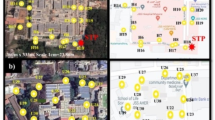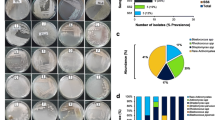Abstract
The activity of antimicrobial agents against soil isolates of N. brasiliensis was studied by determination of the minimum inhibitory concentrations (MICs) and disk diffusion technique, according to the National Committee for Clinical Laboratory Standards (NCCLS). The objectives were: (a) to study the patterns of sensitivity among regional strains of N. brasiliensis isolated from natural sources (soil) of different zones of Tucumán province; (b) to correlate these results with those previously obtained with regional strains of N. brasiliensis isolated from human mycetomas, as a contribution in the evaluation of the importance of the natural reservoir area of the potentially pathogen strains.
The results obtained by both methods identified strains of N. brasiliensis from soils with similar patterns of susceptibility to the strains N. brasiliensis isolated from human mycetomas. This showed strains sensitive and resistant to antibiotics. The majority of the isolates of N. brasiliensis from soils showed higher susceptibilities to antibiotics than the strains isolated from human mycetomas. Among the antibiotics studied, cefotaxime, ceftriaxone and gentamicin were the most effective against all the regional strains tested, and these results are correlated with those obtained with regional strains that cause human mycetomas.
Similar content being viewed by others
Author information
Authors and Affiliations
Rights and permissions
About this article
Cite this article
van Gelderen de Komaid, A.A., Durán, E.L. Antimicrobial susceptibilities of strains of Nocardia brasiliensis isolated from soil of Tucumán. Mycopathologia 141, 115–121 (1998). https://doi.org/10.1023/A:1006939322686
Issue Date:
DOI: https://doi.org/10.1023/A:1006939322686




